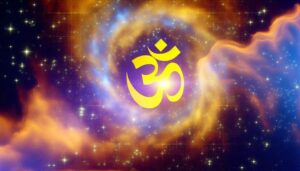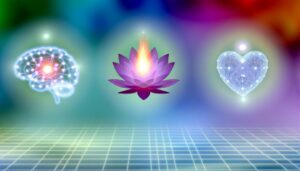What Does the Circle Symbolize in Life?
The circle symbolizes completeness, wholeness, and the harmonious balance integral to various aspects of life. It embodies the cyclical nature of existence, seen in the perpetual cycles of birth, life, death, and rebirth.
Across cultures, it signifies spiritual unity and self-realization, appearing in ancient rituals, visual arts, and philosophical traditions. Psychologically, the circle reflects the journey towards individuation and the integration of the conscious and unconscious mind.
Scientifically, it manifests in the natural world, from atomic structures to celestial mechanics, highlighting unity in diversity. To explore the profound implications of this timeless symbol, one must consider its multifaceted representations.
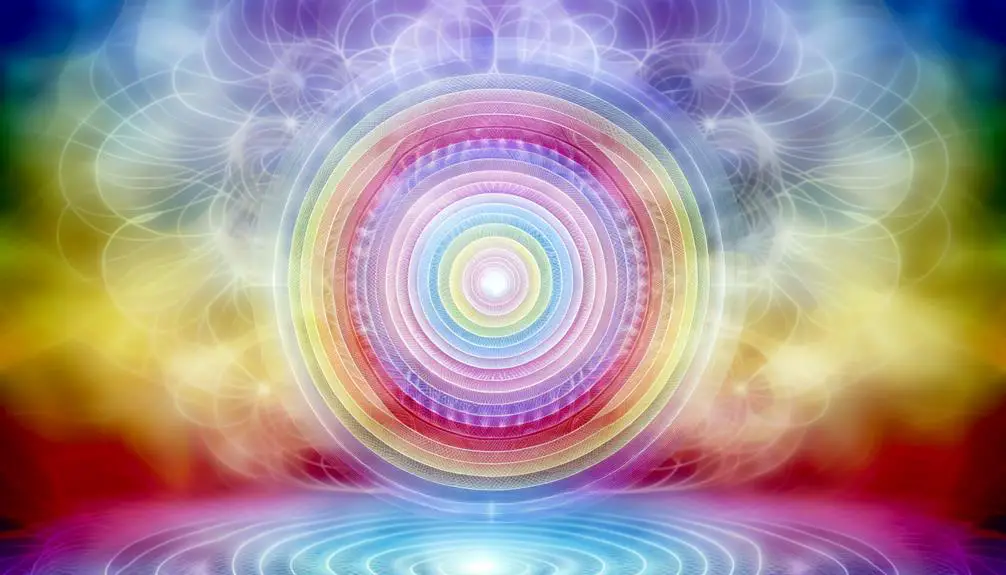
Key Takeaways
- Represents completeness and harmonious balance, embodying the idea of wholeness.
- Symbolizes eternity and the cyclical nature of life, death, and rebirth.
- Acts as a universal emblem of unity and interconnectedness across cultures.
- Reflects the integration of the conscious and unconscious mind in psychological and spiritual contexts.
- Demonstrates fundamental natural principles, seen in atomic structures and celestial mechanics.
Unity and Wholeness
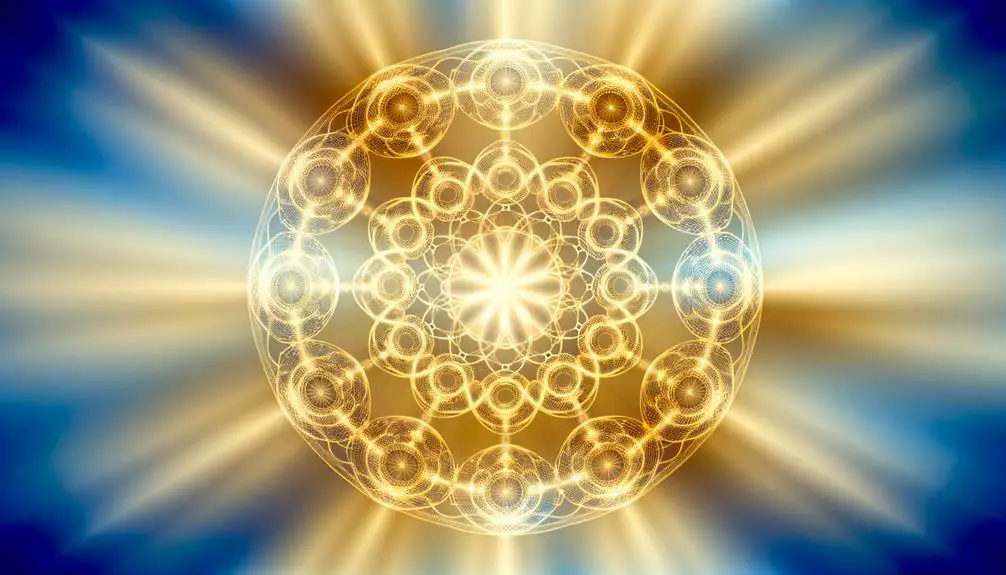
How does the circle, an ancient and universal symbol, encapsulate the profound concepts of unity and wholeness across diverse cultures and philosophical traditions?
The circle's unbroken form, devoid of beginning or end, inherently signifies completeness.
In Eastern philosophies, such as Taoism, it represents the harmonious balance of Yin and Yang, encapsulating interdependence.
Similarly, in Western traditions, the Ouroboros—depicting a serpent consuming its tail—symbolizes eternity and the cyclical nature of existence.
Indigenous cultures regard the circle as sacred; the Native American medicine wheel embodies interconnectedness and holistic health.
The mandala, in Hinduism and Buddhism, serves as a meditational aid, guiding practitioners toward spiritual unity.
Hence, the circle's pervasive presence underscores its universal resonance as an emblem of unity and wholeness.
Cycles of Nature
The circular motif poignantly reflects the perpetual cycles observed in nature, epitomized by the rhythm of the seasons and the phases of the moon. These natural cycles symbolize concepts of renewal and transformation, embodying the continuous process of life, death, and rebirth.
Cultural narratives from ancient agrarian societies to modern ecological philosophies have long revered these cycles, underscoring their profound impact on human existence and environmental harmony.
Seasons and Rebirth
Throughout various cultures, the circle serves as a profound symbol of the seamless transformations and perpetual cycles inherent in the natural world, epitomizing the concepts of seasons and rebirth.
Indigenous traditions, such as those of the Native Americans, often revere the circle for its embodiment of the cyclical nature of life, from the burgeoning growth of spring to the dormancy of winter.
In Eastern philosophies, the circle, or 'ensō' in Japanese Zen, represents the eternal flow of life, death, and renewal.
The Ouroboros, an ancient symbol depicting a serpent consuming its own tail, illustrates the perpetuity of time and the cyclical essence of existence.
These cultural motifs underscore the circle's role as a visual metaphor for the inexorable march of natural cycles and rebirth.
Lunar Phases Influence
In addition to symbolizing the cycles of seasons and rebirth, the circle also captures the essence of the lunar phases, which have profoundly influenced human perception of time and nature.
The waxing and waning of the moon, reflected in its cyclical journey from new moon to full moon, epitomizes the perpetual rhythm of growth, decay, and renewal.
Various cultures revere the moon for its role in agricultural practices, spiritual rituals, and calendrical systems. For instance, the ancient Babylonians meticulously charted lunar phases to orchestrate their agricultural cycles, while many indigenous cultures observe lunar calendars for ceremonial purposes.
This celestial cycle underscores the interconnectedness of all life, imbuing the circle with profound symbolic significance that transcends temporal and cultural boundaries.
Spiritual Symbolism
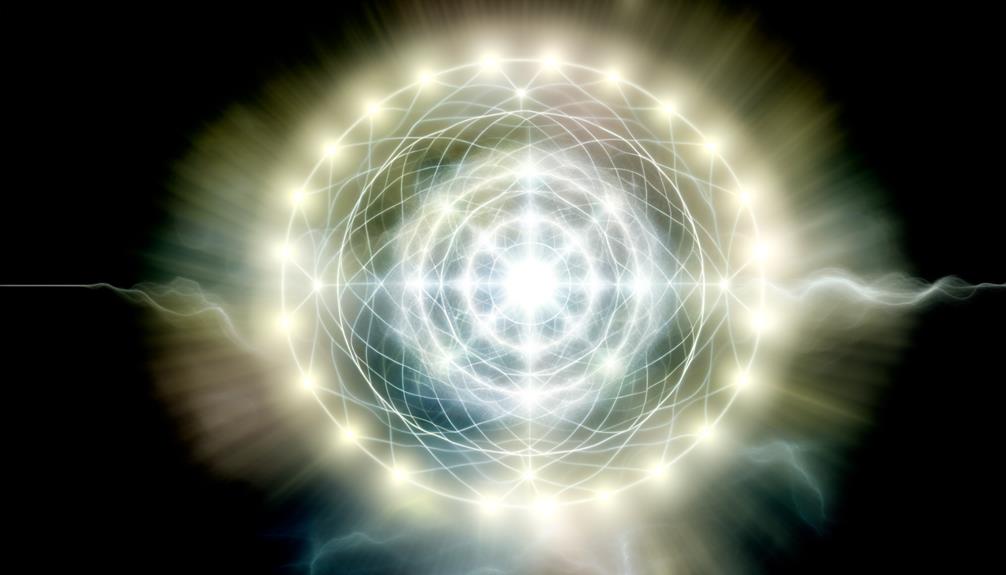
Spiritual symbolism imbues the circle with profound significance, representing concepts such as unity, eternity, and the cyclical nature of existence across various cultures and belief systems. This geometric form transcends physical boundaries, embodying a spiritual continuum that has been revered for millennia. Within this context, the circle often serves as a potent metaphor for the interconnectedness of all life.
- Unity: In many spiritual traditions, the circle signifies wholeness and the interconnected nature of all beings.
- Eternity: The infinite loop of the circle symbolizes the timeless nature of the soul and the universe.
- Cyclical Nature: Circles reflect the perpetual cycles of life, death, and rebirth, epitomizing the ongoing flow of existence.
Such interpretations enrich our understanding of life's intrinsic spiritual dimensions.
Cultural Significance
The circle's cultural significance spans from ancient symbolic interpretations, such as the ouroboros in Greek mythology symbolizing eternity, to modern cultural perspectives where it represents unity and wholeness in global icons like the Olympic rings.
This universal motif transcends time and geography, maintaining thematic consistency in conveying interconnectedness and the cyclical nature of existence.
Exploring these dimensions reveals the circle's capacity to encapsulate complex societal values and human experiences.
Ancient Symbolic Interpretations
Throughout various ancient civilizations, the circle has served as a potent symbol, embodying concepts of unity, eternity, and the cyclical nature of life. Its pervasive presence across cultures elucidates its profound significance:
- Ancient Egyptian Culture: The circle, represented by the sun disk, symbolized Ra, the sun god, and the eternal nature of the universe.
- Indigenous Tribes: Many indigenous cultures revered the circle in rituals and cosmology, viewing it as the sacred hoop symbolizing the interconnectedness of all life.
- Greek Philosophy: In Pythagorean thought, the circle epitomized perfection and the divine, reflecting the harmonious order of the cosmos.
These interpretations underscore the circle's universal resonance, embedding deep philosophical and spiritual meanings that transcend geographic and temporal boundaries.
Modern Cultural Perspectives
In contemporary society, the circle continues to manifest as a powerful emblem of wholeness and interconnectedness, permeating various cultural, artistic, and technological domains.
In art, it symbolizes unity and infinity, evident in modern abstract works and the resurgence of mandala designs.
Culturally, the circle represents communal bonds and cyclical time, influencing rituals and ceremonies.
In technology, circular interfaces and logos, such as the ubiquitous power button, connote simplicity and efficiency.
Moreover, social constructs, like roundtable discussions, emphasize equality and inclusivity.
The circle's omnipresence in modern life underscores its enduring relevance, reflecting humanity's intrinsic desire for unity and completeness, offering a profound lens through which contemporary culture continually reaffirms its foundational values and principles.
Universal Symbolism Themes
A pervasive emblem across civilizations, the circle encapsulates a multiplicity of universal themes, symbolizing concepts such as eternity, unity, and the cyclical nature of existence. Its presence transcends cultural boundaries, embodying profound meanings in diverse traditions.
For instance, in Native American spirituality, the Medicine Wheel represents interconnectivity and holistic balance. Similarly, in Eastern philosophies:
- Hinduism: The Mandala signifies the universe's infinite nature and spiritual journey.
- Buddhism: The Dharma Wheel symbolizes the path to enlightenment.
- Celtic cultures: The circle intertwines with knots, denoting eternity and the interconnectedness of life.
These cultural references underscore the circle's role as a universal symbol, reflecting intrinsic values that resonate deeply within the human experience. Its omnipresence attests to its enduring significance.
Artistic Representations
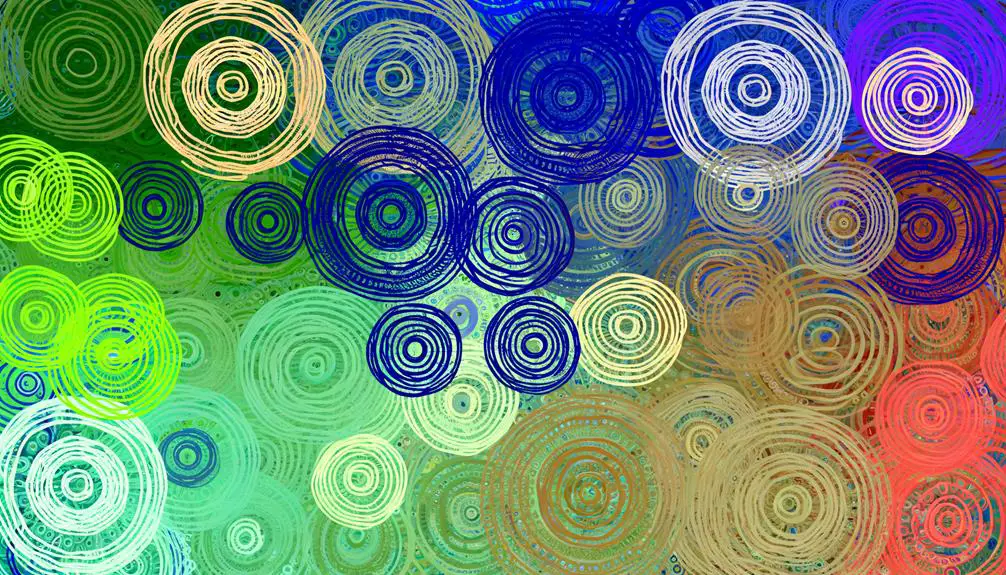
Artistic representations of circles often embody profound philosophical and cultural significances, serving as powerful symbols in various visual arts traditions.
In classical art, circles have been employed to denote the divine, as seen in Christian iconography with halos symbolizing sanctity.
In Eastern mandalas, intricate circular patterns represent the universe and inner harmony.
Modern art movements, such as Abstract Expressionism, utilize circles to explore themes of infinity and unity, evident in the works of artists like Wassily Kandinsky.
Indigenous art frequently incorporates circular motifs to express interconnectedness and continuity.
Through diverse contexts, the circle's omnipresence underscores its role as a universal emblem, facilitating a deeper understanding of human existence and cosmology in artistic expression.
Psychological Meaning
Rooted in Jungian psychology, the circle emerges as a potent archetype symbolizing wholeness, self-integration, and the cyclical nature of human experience. Carl Jung posited that the mandala, a circular figure representing the universe, encapsulates the journey towards individuation—a process by which a person becomes their true self.
The circle's ubiquity across cultures and epochs underscores its psychological profundity:
- Symbol of Unity: Represents the harmonious integration of the conscious and unconscious mind.
- Cycle of Life: Embodies the perpetual nature of growth, death, and rebirth.
- Self-Realization: Acts as a visual metaphor for the quest to achieve a balanced, centered self.
Such interpretations reveal the circle's deep resonance within the human psyche, reflecting our innate drive towards equilibrium and self-coherence.
Scientific Perspectives
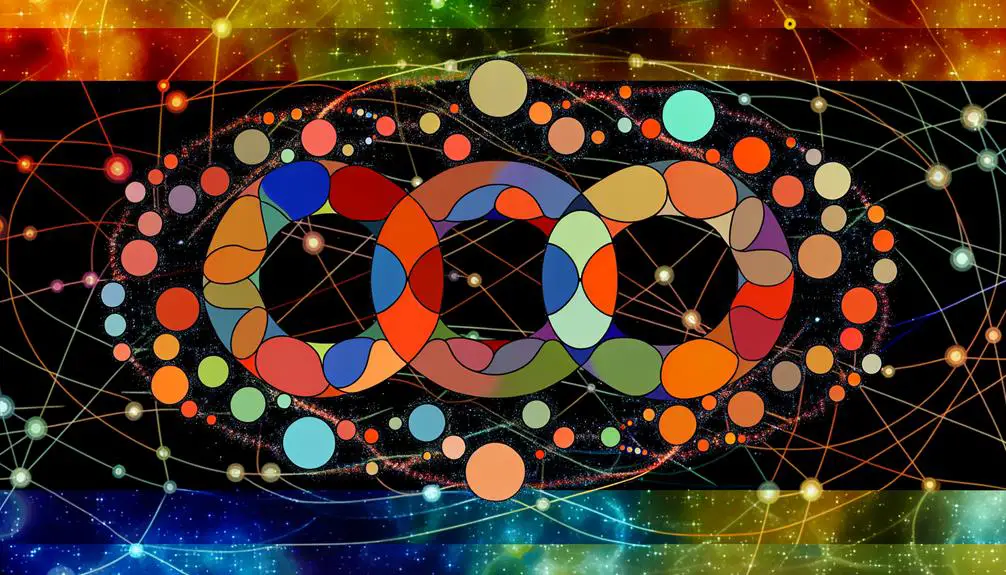
Exploring the circle from a scientific perspective reveals its fundamental role in the natural world, encompassing phenomena from the microscopic to the cosmic scale. At the atomic level, electrons orbit the nucleus in spherical patterns, embodying the circle's symmetry.
In biological systems, cellular structures often adopt circular forms, optimizing space and function. The planets and stars, governed by gravitational forces, move in elliptical orbits, a demonstration of the circle's prevalence in celestial mechanics.
Cultural references, like the ancient Greek understanding of the heavens as perfect circles, underscore its historical significance. In physics, circular motion underpins the principles of angular momentum and rotational dynamics.
Therefore, the circle is not just a symbol but a foundational shape integral to understanding the universe.
Conclusion
Essentially, the circle, a timeless emblem, encapsulates unity, cycles, spirituality, and cultural richness.
Its artistic renditions evoke wholeness, resonating through psychological paradigms and scientific interpretations alike.
The circle's omnipresence across various spectra speaks volumes of its profound significance in human consciousness, mirroring life's perpetual rhythms and interconnectedness.
As a symbol, it serves not just as a shape, but as a profound narrative of existence, reflecting a universal truth that transcends temporal and spatial boundaries.


